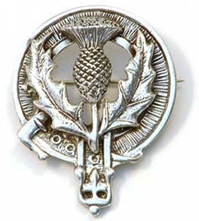|
Also called
O'Neill's Cavalry March, the
O'Neill
refers to Aodh Mór Ó Néill (Hugh O'Neill) and
The Nine Years' War (Irish:
Cogadh na Naoi mBliana
or Cogadh Naoi mBlian)
or Tyrone's Rebellion took place in Ireland from 1594 to
1603 fought between the forces of Gaelic Irish
chieftains Hugh O'Neill of Tír Eoghain, Hugh Roe
O'Donnell of Tír Chonaill and their allies, against
English rule in Ireland. The war was fought in all parts
of the country, but mainly in the northern province of
Ulster. It ended in defeat for the Irish chieftains,
which led to their exile in the Flight of the Earls and
to the Plantation of Ulster.
The
war against O'Neill and his allies was the largest
conflict fought by England in the Elizabethan era. At
the height of the conflict (1600–1601) more than 18,000
soldiers were fighting in the English army in Ireland.
By contrast, the English army assisting the Dutch during
the Eighty Years' War was never more than 12,000 strong
at any one time.
The
Nine Years' War was caused by the collision between the
ambition of the Gaelic Irish chieftain Hugh O'Neill and
the advance of the English state in Ireland, from
control over the Pale to ruling the whole island. The
Pale (An Pháil in Irish) or the English Pale (An
Pháil Sasanach), was the part of Ireland that was
directly under the control of the English government in
the late Middle Ages. It had been reduced by the late
15th century to an area along the east coast stretching
from Dalkey, south of Dublin, to the garrison town of
Dundalk. The inland boundary went to Naas and Leixlip
around the Earldom of Kildare, towards Trim and north
towards Kells.
In
resisting this advance, O'Neill managed to rally other
Irish septs who were dissatisfied with English
government and some Catholics who opposed the spread of
Protestantism in Ireland.
In the aftermath, The English Lord Mountjoy smashed the
O'Neills' inauguration stone at Tullaghogue,
symbolically destroying the O'Neill clan. Famine soon
hit Ulster as a result of the English scorched earth
strategy. O'Neill's uirithe or sub-lords (O'Hagan,
O'Quinn, MacCann) began to surrender and Rory O'Donnell,
Hugh Roe's brother and successor, surrendered on terms
at the end of 1602. However, with a secure base in the
large and dense forests of Tir Eoghain, O'Neill held out
until 30 March 1603, when he surrendered on good terms
to Mountjoy, signing the Treaty of Mellifont; Elizabeth
I had died on 24 March.
The
leaders of the rebellion received good terms from the
new King of England, James I, in the hope of ensuring a
final end of the draining war that had brought England
close to bankruptcy. O'Neill, O'Donnell and the other
surviving Ulster chiefs were granted full pardons and
the return of their estates. The stipulations were that
they abandon their Irish titles, their private armies,
their control over their dependents and swear loyalty
only to the Crown of England. In 1604, Mountjoy declared
an amnesty for rebels all over the country. The reason
for this apparent mildness was that the English could
not afford to continue the war any longer. Elizabethan
England did not have a standing army, nor could it force
its Parliament to pass enough taxation to pay for long
wars. Moreover, it was already involved in a war in the
Spanish Netherlands. As it was, the war in Ireland
(which cost over £2 million) came very close to
bankrupting the English exchequer by its close in 1603.
Irish sources claimed that as many as 60,000 people had
died in the Ulster famine of 1602–3 alone. This is
likely to be a major overestimate, as in 1600 the total
adult population of Ulster has been estimated at only
25,000 to 40,000 people. An Irish death toll
of over 100,000 is possible. At least 30,000 English
soldiers died in Ireland in the Nine Years' War, mainly
from disease. So the total death toll for the war was
certainly at least 100,000 people, and probably more.
Although O'Neill and his allies received good terms at
the end of the war, they were never trusted by the
English authorities and the distrust was mutual.
O'Neill, O'Donnell and the other Gaelic lords from
Ulster left Ireland in 1607 in what is known as the
Flight of the Earls. They intended to organize an
expedition from a Catholic power in Europe to restart
the war, preferably Spain, but were unable to find any
military backers.
O’
Neill's March is often played together with
O'Donnel's
March because of a historical reason. In Dublin, during
the negotiations following the Nine Years War, when
O'Neill knew James I became the new King of England came
to him with
Rory O'Donnell,
1st Earl of Tyrconnell just to have back his title of
Earl and all his lands. |



